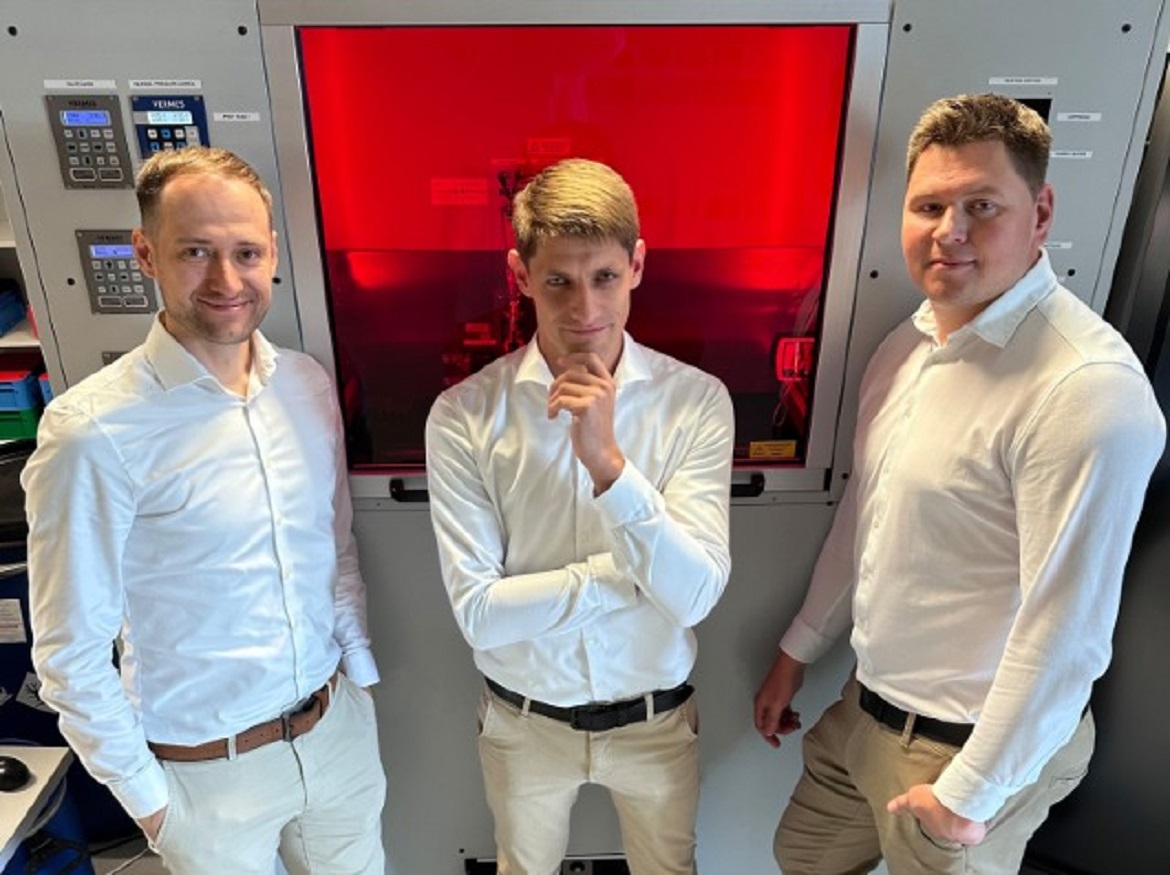Multi-material 3D printing with technical materials holds huge potential. In this way, functionalized or functionally graded products can be printed in a resource-saving manner within a single process. This shortens the process chain significantly and reduces manufacturing costs compared to conventional production routes. In order to market this promising technology, the developers of multi-material jetting technology at the Fraunhofer Institute for Ceramic Technologies and Systems IKTS founded AMAREA Technology GmbH. The spin-off has been active since February 2023. The entrepreneurs appear on the market as system developers and sell both the printing technology and the newly developed printing materials. The possibilities extend beyond technical ceramics: metals, hard metals, glasses, composite materials.
Multi-material 3D printing with high-performance materials is the next level in additive manufacturing and has been developed at IKTS since 2014. During this time, a wealth of knowledge and experience was gained. The potential of multi-material jetting technology (MMJ) has already been successfully demonstrated with meaningful prototypes and a wide range of industrial customers. That’s why Steven Weingarten, Lutz Gollmer, Philipp Horn, and Robert Johne founded AMAREA Technology GmbH based in Dresden in February 2023. From now on they want to commercialize MMJ and put the 3D printers into series production. They are supported by Fraunhofer IKTS and the Federal Ministry for Economic Affairs and Climate Protection BMWK as part of the EXIST research transfer funding program.
Key component printing material
The development and sales of high-tech 3D printers is one of the three business areas – alongside printing materials and services. In the latest generation of systems, up to six print heads can be installed. This means that up to six different materials can be combined with each other at the same time. These must be coordinated with one another – IKTS’s many years of know-how in the area of material development comes into play here. In recent years, more than 15 materials and material combinations have been qualified for MMJ technology. AMAREA Technology GmbH benefits precisely from this expertise. In this way, the spin-off can provide its customers with technology that which produces multi-material components in a single printing job – from the selection and development of the printing material to the component design. IKTS and AMAREA Technology will continue to work closely together in the future and continue to advance the topic of multi-material.
Using multi-material 3D printing to create functionalized and graded components
The great advantages of additive manufacturing lie in the rapid realization of innovative ideas, the design freedom, and the extensive geometry independence. Thanks to the variety of materials used in multi-material 3D printing, there are now even fewer limits to creativity. Materials with defined properties can be produced and combined, such as electrically conductive and electrically insulating, dense and porous, hard and ductile, multicolored or magnetic and non-magnetic. Functionalized components or entire assemblies, for example with integrated sensors or actuators, can be printed within one process – and all without cross-contamination of the individual materials. By gradually combining materials within a layer and from layer to layer with defined properties,
Huge application potential
Multi-material 3D printing gives manufacturers the opportunity to adapt products to the needs of users even better than before. By shortening the process chain, production times and costs can also be significantly reduced, the product variety can be expanded and more powerful and robust components or assemblies can be produced. AMAREA Technology’s target groups are developers and manufacturers of components made of high-performance materials from a wide range of industries such as electronics and semiconductor technology, special tool construction, automotive technology and supply chains, the jewelry and watch industry, aerospace, medical technology, and energy technology. However, prototype construction and research institutions can also benefit from the advantages of multi-material 3D printing.
With the laser module, no complex post-processing of the printed components is required
The new generation of 3D printers is scheduled to come onto the market in mid-2024. The modular system concept offers the possibility of customizing the 3D printer. With up to six print heads, and thus up to six different materials, the 3D printer currently achieves component accuracies of 70 to 100 µm. Up to two profile sensors can be integrated for inline process control in order to automate the process parameterization and, in the future, to geometrically measure the components during the printing process. With the future optionally available laser module, which removes material, polishes or structures the surfaces during 3D printing, surface roughnesses of less than 1 µm can be achieved. This eliminates the need for complex post-processing of components. Manufacturers can thus further optimize their production in terms of time and costs. In the future, other AI methods will also contribute to quality assurance, such as defect detection and automatic adjustment of process parameters during the printing process.
Increase productivity through intelligent path planning
Depending on the component size and geometry, the success of additive manufacturing also depends on productivity, i.e. how quickly a component can be printed. The speed is currently 8 to 12 cm 3 /h per print head. The aim of the new generation of 3D printers is to at least double the speed, which is achieved through intelligent path planning. This means that the specially developed software determines the optimal path for the material application per shift. This not only saves time but also energy.
Innovators can visit AMAREA Technology at Formnext in Frankfurt from the 7th to the 10th. November 2023 in Hall 12.1 at Stand 121-B39A and find out more about the topic of multi-material 3D printing.
Click on the following link Metrologically Speaking to read more such news about the Metrology Industry.








